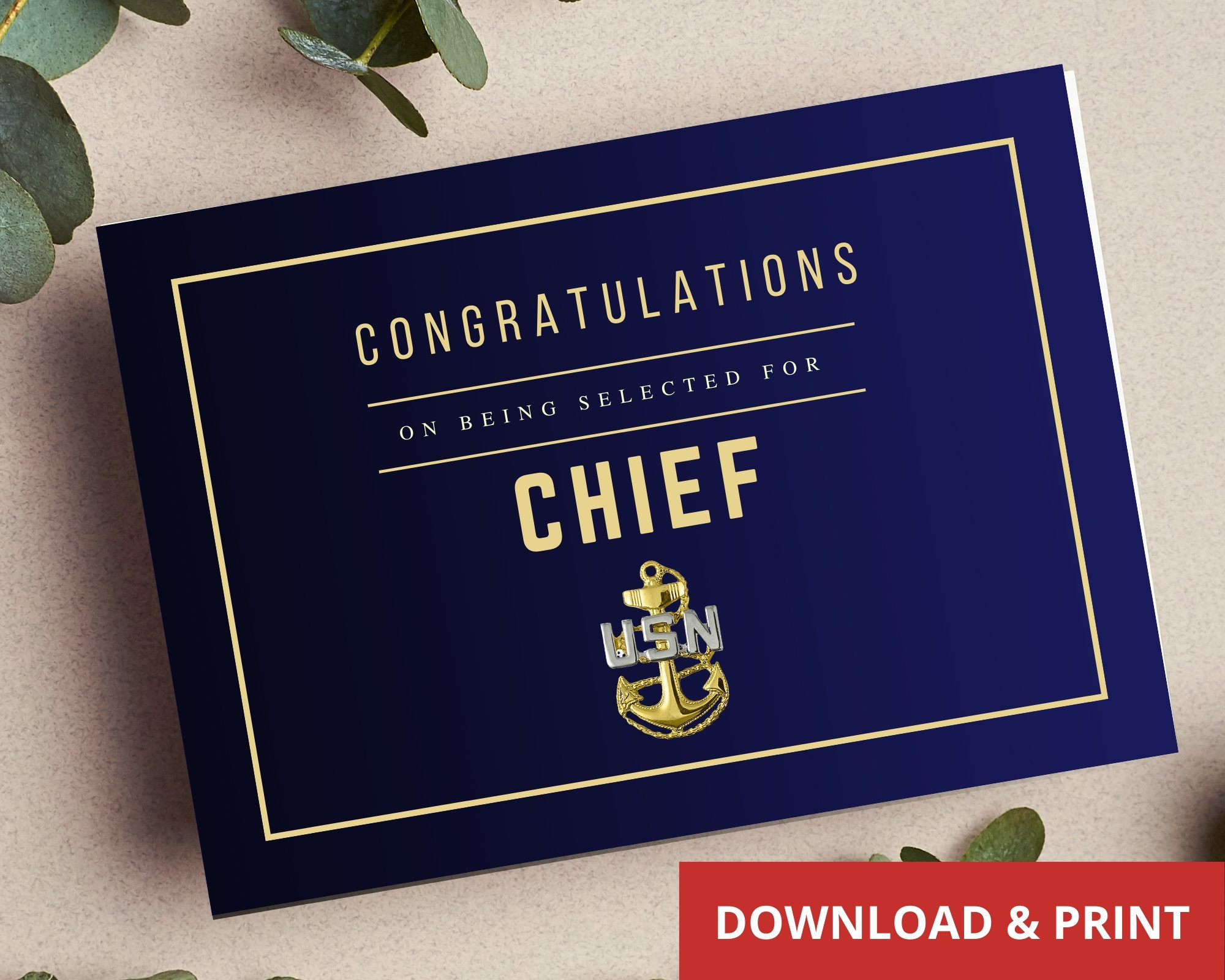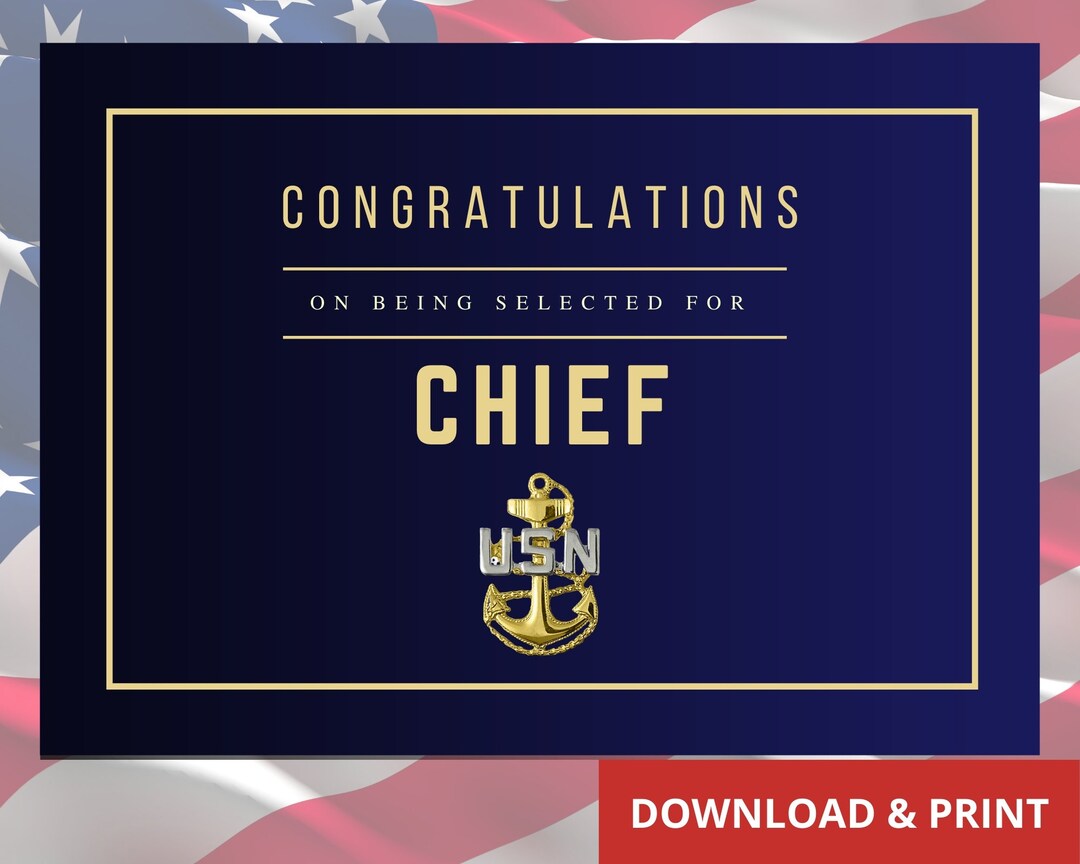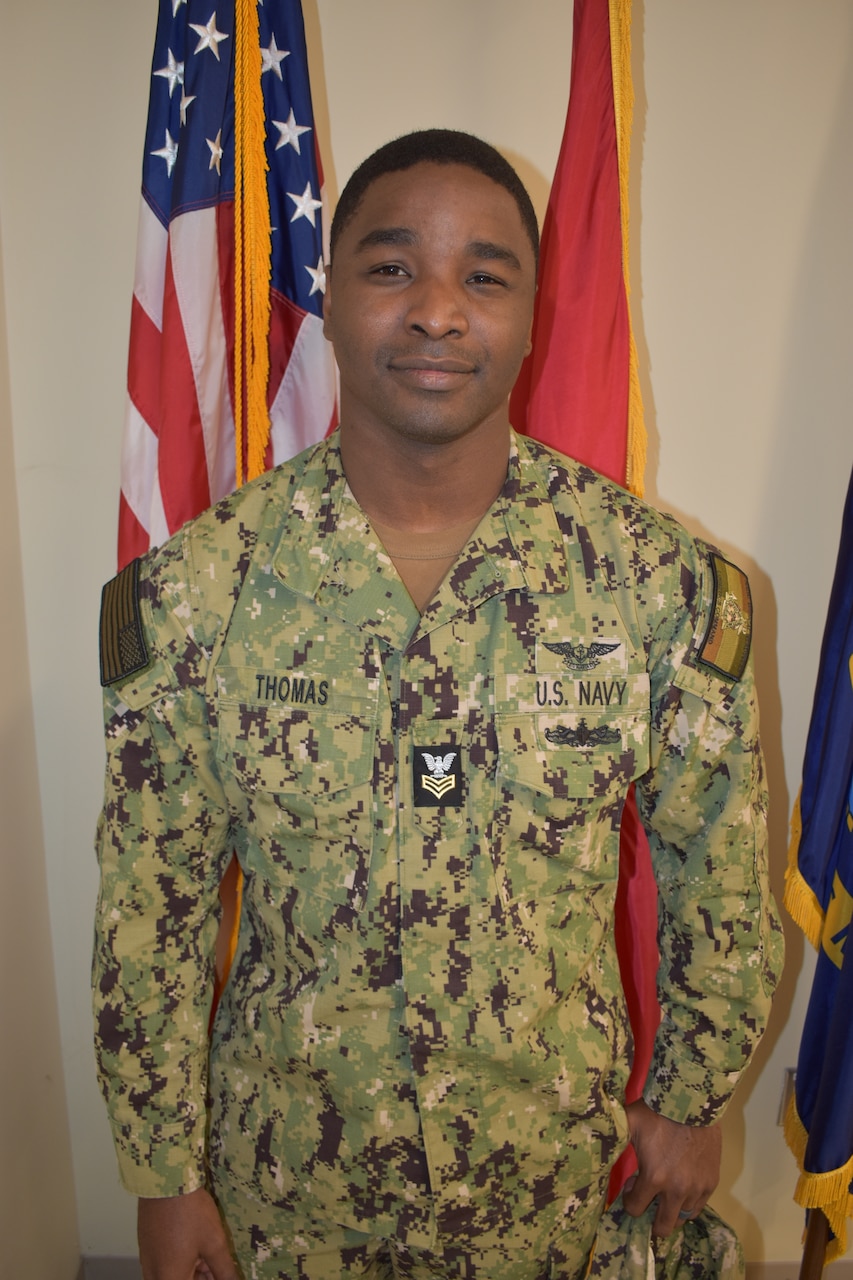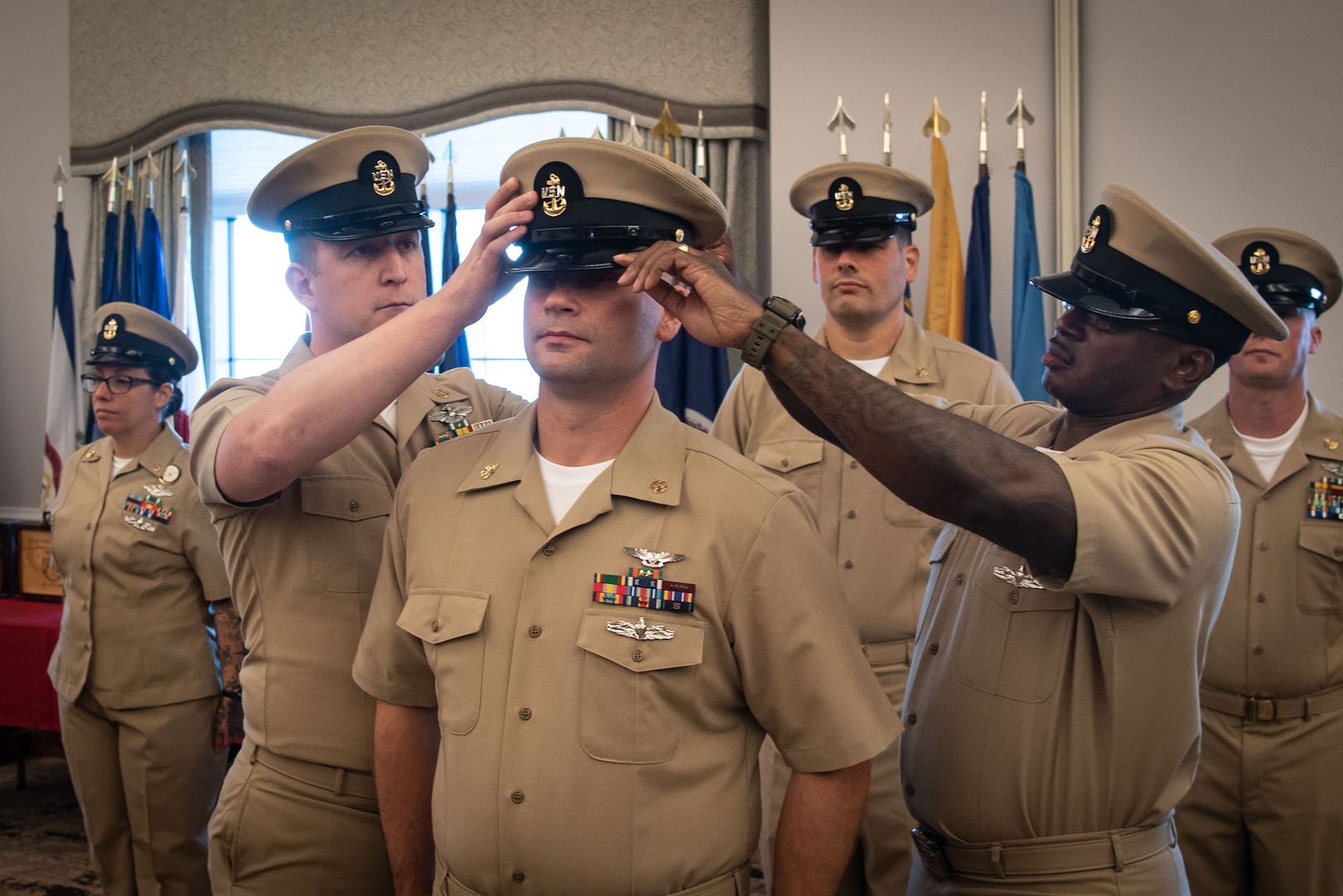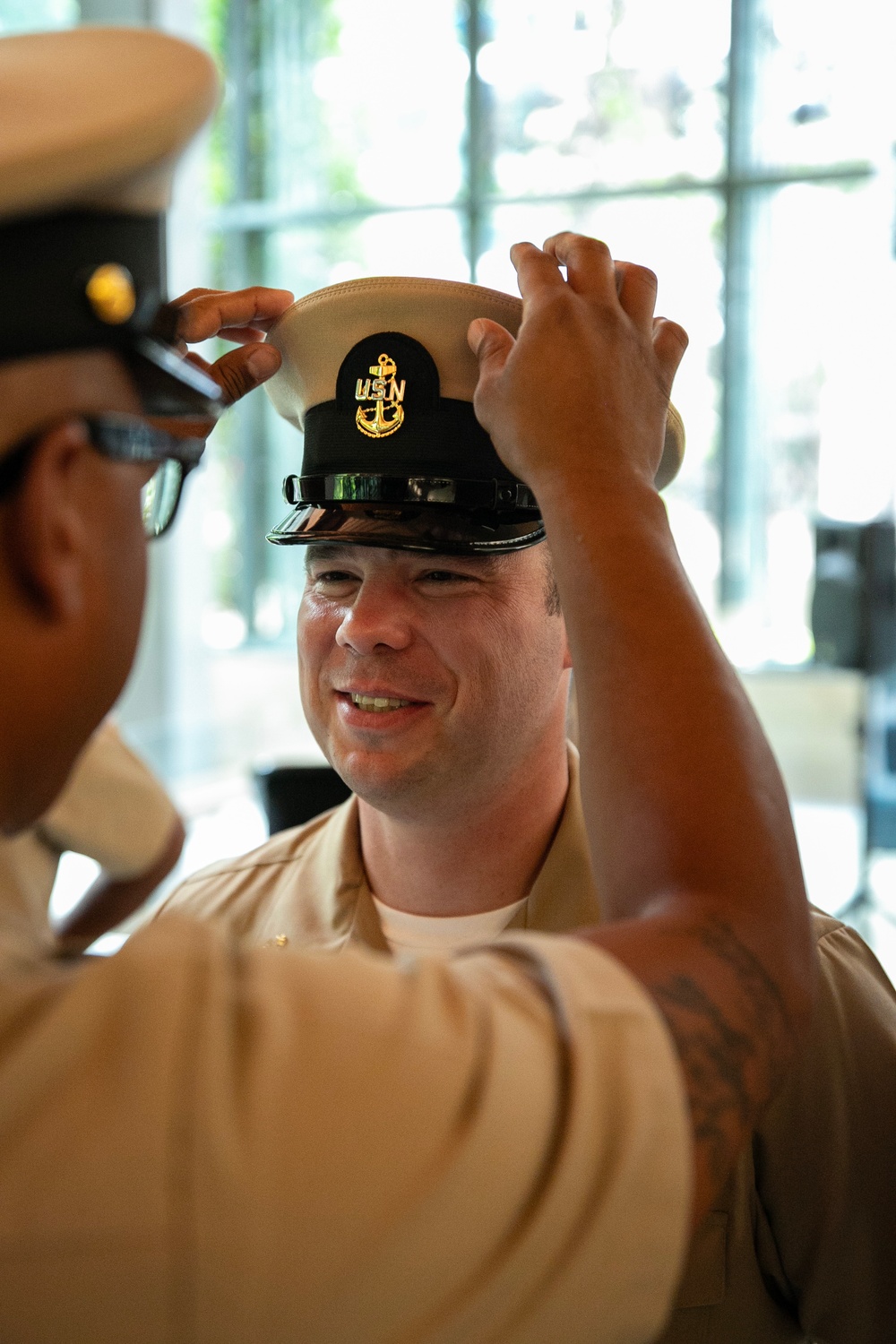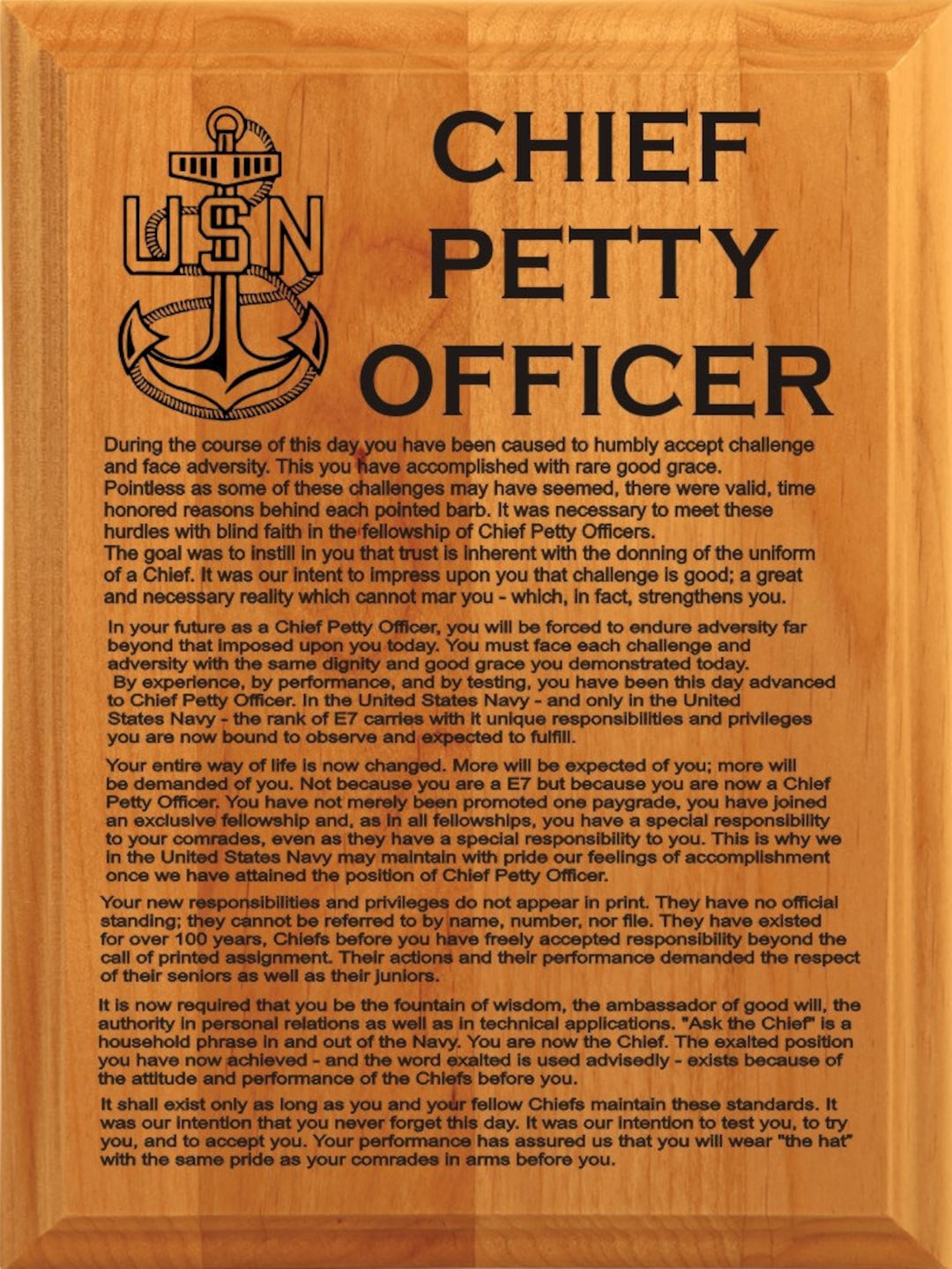To Accept A Promotion To Chief Petty Officer

The salty air hung thick with anticipation. Sunlight glinted off polished brass belt buckles, reflecting in the expectant eyes of sailors standing at attention. A hush fell over the ranks as Chief Selectees, newly pinned with their anchors, stood poised on the precipice of a profound transition – accepting the weighty responsibilities that come with the title of Chief Petty Officer.
The decision to accept a promotion to Chief Petty Officer (CPO) in the United States Navy is a pivotal moment in a sailor's career, a commitment that extends far beyond increased pay and authority. It signifies a profound shift in leadership roles, demanding mentorship, unwavering responsibility, and a dedication to upholding the Navy's traditions and values.
The Making of a Chief
The path to becoming a Chief Petty Officer is not a sprint, but a marathon. It's forged in the crucible of challenging deployments, demanding training exercises, and countless hours of dedicated service. It starts with enlistment, often driven by a desire for adventure, a commitment to service, or a pursuit of a better future.
Sailors spend years honing their technical skills, mastering their respective rates, and demonstrating leadership potential within their divisions. This journey demands perseverance, adaptability, and a willingness to learn from both successes and failures.
Many aspiring Chiefs credit strong mentors throughout their careers. These seasoned leaders impart invaluable lessons, sharing their knowledge and experience to guide junior sailors toward excellence. They instill the importance of integrity, accountability, and the selfless dedication that defines the Navy's core values.
The selection process itself is rigorous and demanding. Candidates are evaluated on a multitude of factors, including their performance evaluations, leadership skills, professional knowledge, and contributions to the Navy and their communities. The selection board meticulously reviews each candidate's record, seeking individuals who possess the qualities necessary to lead and mentor the next generation of sailors.
The Weight of the Anchor
The moment a sailor is notified of their selection to Chief Petty Officer is often described as surreal and transformative. The elation of achieving this milestone is quickly followed by the realization of the immense responsibility that comes with it. The anchor, the symbol of the Chief Petty Officer, represents hope, security, and stability. It is a tangible reminder of the trust placed in them by the Navy.
Chiefs are expected to be technical experts, leaders, and mentors. They are the backbone of the Navy, bridging the gap between officers and junior enlisted personnel. They are responsible for training, mentoring, and developing the next generation of sailors, ensuring the continued readiness and effectiveness of the fleet.
The role of a Chief extends beyond technical proficiency. They are also expected to be counselors, mediators, and problem solvers. Sailors often turn to their Chiefs for guidance and support, both professionally and personally. This requires empathy, patience, and a genuine commitment to the well-being of their sailors.
"Chiefs eat last," is a common saying within the Navy, encapsulating the selflessness and dedication expected of a Chief Petty Officer. It reflects their unwavering commitment to prioritizing the needs of their sailors above their own.
More Than a Rank: A Transformation
Accepting the promotion to Chief Petty Officer is more than just taking on a new rank; it's a transformation of identity. It requires a willingness to embrace a new level of responsibility, to lead with integrity, and to uphold the highest standards of conduct. It means becoming a role model for all sailors, regardless of rank or experience.
This transformation often involves a shift in perspective. Chiefs must learn to see the bigger picture, to understand the strategic goals of the Navy, and to translate those goals into actionable tasks for their sailors. They must be able to anticipate challenges, identify solutions, and effectively communicate their plans to their team.
The transition can be challenging, requiring Chiefs to adapt to new roles and responsibilities while maintaining the trust and respect of their peers and subordinates. This often involves learning to delegate tasks effectively, to empower sailors to take ownership of their work, and to provide constructive feedback that fosters growth and development.
According to data from the Navy Personnel Command, the retention rate of Chief Petty Officers is consistently high, demonstrating the deep commitment these leaders have to the Navy and their sailors. This commitment stems from a sense of purpose, a dedication to service, and a belief in the importance of their role in shaping the future of the Navy.
The Legacy of Leadership
The impact of a Chief Petty Officer extends far beyond their immediate command. They leave a lasting legacy of leadership, mentorship, and service. The sailors they train and mentor go on to become leaders themselves, carrying forward the values and traditions instilled in them by their Chiefs.
Master Chief Petty Officer of the Navy (MCPON) James Honea, the senior enlisted leader of the Navy, emphasizes the critical role Chiefs play in maintaining the Navy's warfighting readiness. He often speaks about the importance of empowering Chiefs to lead, mentor, and develop sailors, ensuring the Navy remains the most capable and effective fighting force in the world.
The decision to accept the promotion to Chief Petty Officer is a testament to a sailor's unwavering commitment to the Navy and their country. It is a recognition of their hard work, dedication, and leadership potential. It is an opportunity to make a profound impact on the lives of sailors and the future of the Navy.
The Navy's strength lies in its people, and the Chief Petty Officer corps is the bedrock of that strength. Their leadership, experience, and dedication are essential to maintaining the Navy's readiness and its ability to project power around the world. The weight of the anchor is heavy, but the shoulders of the Chiefs are broad and strong.
A Moment of Reflection
Standing on that parade ground, bathed in the warm California sun, a newly minted Chief might reflect on the journey that led them to this moment. They might think of the challenges overcome, the sacrifices made, and the mentors who guided them along the way. They might feel a sense of pride, gratitude, and a deep responsibility to uphold the traditions of the Navy.
The decision to accept this promotion is not just a step up the ladder; it's a leap of faith. It's a commitment to lead with integrity, to serve with dedication, and to always put the needs of their sailors first. It is a promise to be the "Chief" that their sailors need, both today and in the years to come.
As the ceremony concludes, and the newly pinned Chiefs are greeted with handshakes and congratulations, the air is filled with a sense of hope and optimism. The future of the Navy is in good hands, guided by the unwavering leadership of its Chief Petty Officers.



